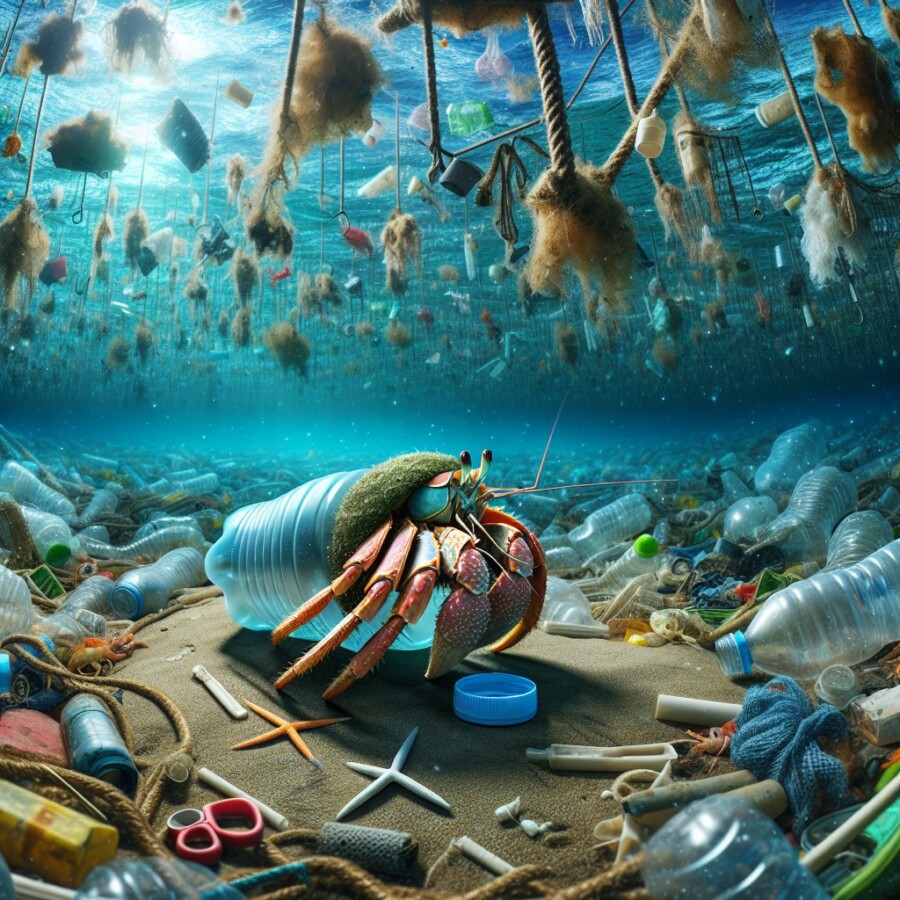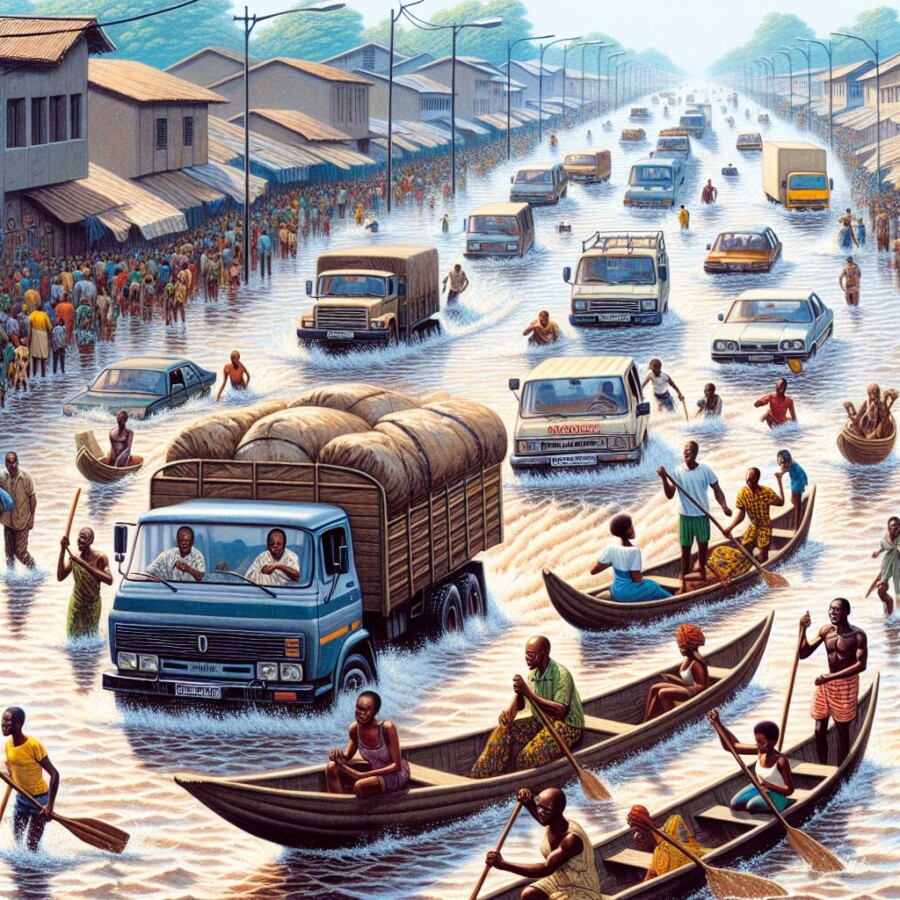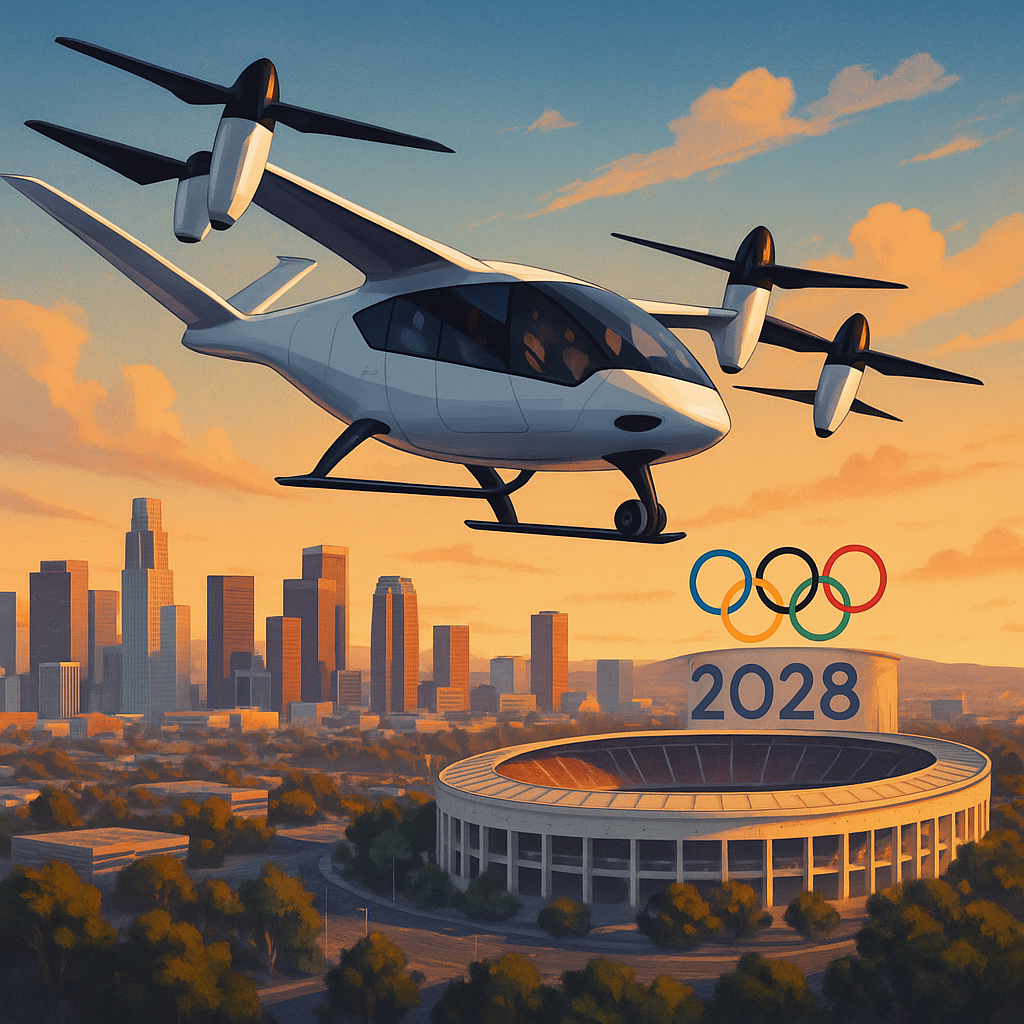Hermit crabs usually use shells to protect themselves, but now they are starting to use plastic instead. Scientists looked at pictures taken by people who love nature and put them online. They were really sad to see that the crabs were living in our garbage. The study was published in a science journal and used social media to collect information. The researchers found that two-thirds of hermit crab species were using fake shells, mostly made of plastic.
The scientists found 386 hermit crabs using plastic caps as shells. They also found that 10 out of 16 types of land hermit crabs around the world use this kind of shelter. But they don’t know yet if the plastic is good or bad for the crabs. The researchers want to learn more about how the crabs use plastic and how it might affect them in the future.
Hermit crabs all over the world are using plastic shells. The researchers want to see if the crabs will fight over the plastic shells, like they do with natural snail shells. There are fewer snail shells now, so it might be easier for the crabs to find plastic ones. The lighter plastic shells might even help smaller and weaker crabs survive because they are easier to carry.
There is a lot of plastic in the ocean for the crabs to choose from. One study said that there are at least 171 trillion pieces of plastic floating in the ocean. If we don’t do anything, this number could triple by 2040. But there is hope that a global agreement to stop plastic pollution will be made in 2024. A professor named Mark Miodownik thinks we should learn from the hermit crabs and reuse plastic instead of throwing it away.
Original news source: Hermit crabs are ‘wearing’ our plastic rubbish (BBC)
🎧 Listen:
Slow
Normal
Fast
📖 Vocabulary:
| 1 | hermit | A person who lives alone and avoids others, or an animal that lives alone |
| 2 | synthetic | Made by human beings and not occurring naturally |
| 3 | researchers | People who study things carefully to discover new facts about the world |
| 4 | species | A group of living organisms that are very similar to each other |
| 5 | journal | A book or magazine that publishes scientific or academic articles |
| 6 | social media | Websites and applications that allow users to create and share content or to participate in social networking |
| 7 | affect | To have an impact on something or change it in some way |
| 8 | shelter | A place that provides protection from weather, danger, or enemies |
| 9 | snail | A type of mollusk with a coiled shell, some of which are used by hermit crabs as homes |
| 10 | survive | To continue to live or exist, especially in spite of danger or hardship |
| 11 | pollution | The introduction of harmful substances or products into the environment |
| 12 | agreement | A formal arrangement between two or more parties |
| 13 | professor | A teacher of the highest rank in a college or university |
| 14 | reuse | To use something again for the same purpose or a new one |
| 15 | pollution | The introduction of harmful substances or products into the environment |
Group or Classroom Activities
Warm-up Activities:
– News Summary
Instructions: Have students read the article individually and then write a summary of the main points. Encourage them to use their own words and include the key information about hermit crabs using plastic shells.
– Opinion Poll
Instructions: Divide the class into pairs or small groups. Ask students to discuss their opinion on the topic of hermit crabs using plastic shells. Then, have them create a poll with questions to ask other classmates. Each group can take turns conducting the poll and recording the results.
– Vocabulary Pictionary
Instructions: Prepare a list of vocabulary words from the article related to hermit crabs and plastic pollution. Divide the class into teams and have one student from each team come to the front of the class. Show them a word from the list and give them one minute to draw a picture to represent the word. The other students in their team must guess the word based on the drawing. The team with the most correct guesses wins.
– Pros and Cons
Instructions: Divide the class into two groups. One group will discuss the pros of hermit crabs using plastic shells, while the other group will discuss the cons. Give them time to brainstorm their arguments and then have a debate-style discussion, where each group presents their points and counters the arguments of the other group.
– Future Predictions
Instructions: In pairs or small groups, have students discuss and make predictions about the future of hermit crabs and plastic pollution. They can consider questions like: Will hermit crabs continue to use plastic shells? Will there be any negative consequences for the crabs? Will humans find a solution to plastic pollution? After the discussion, each group can share their predictions with the class.
🤔 Comprehension Questions:
1. What did the scientists find out about hermit crabs and their use of plastic?
2. How did the scientists collect information for their study?
3. How many hermit crabs were found using plastic caps as shells?
4. Do the scientists know if plastic is good or bad for the crabs?
5. What do the researchers want to learn more about regarding the crabs and plastic?
6. What do the researchers want to see if the crabs will do with the plastic shells?
7. Why might it be easier for the crabs to find plastic shells compared to natural snail shells?
8. How much plastic is estimated to be floating in the ocean according to one study?
Go to answers ⇩
🎧✍️ Listen and Fill in the Gaps:
Hermit (1)______ usually use (2)______ to protect themselves, but now they are starting to use (3)______ instead. Scientists looked at pictures taken by people who love nature and put them online. They were really sad to see that the crabs were living in our garbage. The study was (4)______ in a science journal and used social media to collect information. The researchers found that two-thirds of hermit crab species were (5)______ fake shells, mostly made of plastic.
The scientists (6)______ 386 hermit crabs using plastic caps as shells. They also found that 10 out of 16 types of land hermit crabs around the world use this kind of (7)______. But they don’t know yet if the plastic is good or bad for the crabs. The (8)______ want to learn more about how the crabs use plastic and how it might affect them in the future.
Hermit crabs all over the world are using plastic shells. The researchers want to see if the crabs will fight over the plastic shells, like they do with natural snail shells. There are fewer snail shells now, so it might be (9)______ for the crabs to find plastic ones. The (10)______ plastic shells might even help (11)______ and (12)______ crabs survive because they are easier to carry.
There is a lot of plastic in the ocean for the crabs to choose from. One study said that there are at least 171 trillion pieces of plastic floating in the ocean. If we don’t do anything, this number could (13)______ by 2040. But there is hope that a global agreement to stop plastic pollution will be made in 2024. A professor (14)______ Mark (15)______ thinks we should (16)______ from the hermit crabs and reuse plastic instead of throwing it away.
Go to answers ⇩
💬 Discussion Questions:
Students can ask a partner these questions, or discuss them as a group.
1. What is a hermit crab and what do they use to protect themselves?
2. How do scientists collect information about hermit crabs using plastic shells?
3. How do you think the scientists felt when they saw that the crabs were living in our garbage?
4. Do you think it’s good or bad that hermit crabs are using plastic shells? Why or why not?
5. How do you think the plastic shells might affect the hermit crabs in the future?
6. Do you think hermit crabs will fight over plastic shells like they do with natural snail shells? Why or why not?
7. Why do you think it might be easier for the crabs to find plastic shells instead of snail shells?
8. How do you think the lighter plastic shells might help smaller and weaker crabs survive?
9. How much plastic is floating in the ocean according to the study mentioned in the article?
10. How do you feel about the fact that the number of plastic pieces in the ocean could triple by 2040?
11. Do you think a global agreement to stop plastic pollution will be effective? Why or why not?
12. What can we learn from the hermit crabs about reusing plastic instead of throwing it away?
13. How do you personally try to reduce plastic pollution in your daily life?
14. Do you think people should be more aware of the impact of plastic pollution on animals like hermit crabs? Why or why not?
15. What actions do you think individuals and governments can take to reduce plastic pollution?
Individual Activities
📖💭 Vocabulary Meanings:
Match each word to its meaning.
Words:
1. hermit
2. synthetic
3. researchers
4. species
5. journal
6. social media
7. affect
8. shelter
9. snail
10. survive
11. pollution
12. agreement
13. professor
14. reuse
15. pollution
Meanings:
(A) A type of mollusk with a coiled shell, some of which are used by hermit crabs as homes
(B) People who study things carefully to discover new facts about the world
(C) A place that provides protection from weather, danger, or enemies
(D) To use something again for the same purpose or a new one
(E) The introduction of harmful substances or products into the environment
(F) Websites and applications that allow users to create and share content or to participate in social networking
(G) Made by human beings and not occurring naturally
(H) To continue to live or exist, especially in spite of danger or hardship
(I) A group of living organisms that are very similar to each other
(J) A teacher of the highest rank in a college or university
(K) A formal arrangement between two or more parties
(L) To have an impact on something or change it in some way
(M) A book or magazine that publishes scientific or academic articles
(N) A person who lives alone and avoids others, or an animal that lives alone
(O) The introduction of harmful substances or products into the environment
Go to answers ⇩
🔡 Multiple Choice Questions:
1. How did scientists collect information about hermit crabs using plastic shells?
(a) They went scuba diving to observe the crabs in their natural habitat.
(b) They conducted experiments in a laboratory to study the crabs’ behavior.
(c) They looked at pictures taken by people who love nature and put them online.
(d) They interviewed hermit crab experts to gather information.
2. What did the researchers find about the types of shells hermit crabs were using?
(a) Most hermit crabs were using natural snail shells instead of plastic.
(b) Two-thirds of hermit crab species were using fake shells, mostly made of plastic.
(c) Only a small percentage of hermit crab species were using plastic shells.
(d) The researchers did not find any hermit crabs using plastic shells.
3. What do the researchers want to learn about the hermit crabs and plastic?
(a) Whether plastic shells are better than natural snail shells for the crabs.
(b) How the crabs use plastic and how it might affect them in the future.
(c) How many hermit crabs are using plastic shells in each country.
(d) Whether hermit crabs will fight over plastic shells like they do with natural snail shells.
4. How might plastic shells help smaller and weaker hermit crabs?
(a) They provide better protection than natural snail shells.
(b) They attract more food for the crabs to eat.
(c) They make the crabs grow bigger and stronger.
(d) They are lighter and easier to carry.
5. How much plastic is estimated to be floating in the ocean?
(a) At least 171 trillion pieces of plastic.
(b) Only a few thousand pieces of plastic.
(c) About a million pieces of plastic.
(d) The researchers did not provide an estimate.
6. What could happen to the amount of plastic in the ocean by 2040?
(a) It could triple if no action is taken.
(b) It could decrease significantly.
(c) It could stay the same as it is now.
(d) The researchers did not provide a prediction.
7. What is the hope for stopping plastic pollution?
(a) Scientists will develop a way to remove all plastic from the ocean.
(b) The hermit crabs will stop using plastic shells.
(c) People will stop using plastic altogether.
(d) A global agreement to stop plastic pollution will be made in 2024.
8. What does Professor Mark Miodownik suggest we do with plastic?
(a) Bury it in landfills to prevent pollution.
(b) Burn it to generate energy.
(c) Reuse it instead of throwing it away.
(d) Stop using plastic completely.
Go to answers ⇩
🕵️ True or False Questions:
1. The researchers are not interested in studying how the crabs use plastic and how it may impact them in the future.
2. Less than half of hermit crab species were found to be using plastic shells, according to the study.
3. The abundance of plastic in the ocean provides the crabs with a wide variety of options for shelter.
4. The researchers discovered 386 hermit crabs using natural shells as habitats.
5. 10 out of 16 types of land hermit crabs worldwide were found to use plastic shells.
6. It is widely known that the plastic shells are beneficial to the crabs.
7. Hermit crabs have started using plastic instead of shells to protect themselves.
8. Scientists used pictures from nature lovers on social media to study hermit crabs living in plastic.
Go to answers ⇩
📝 Write a Summary:
Write a summary of this news article in two sentences.
Check your writing now with the best free AI for English writing!
Writing Questions:
Answer the following questions. Write as much as you can for each answer.
Check your answers with our free English writing assistant!
1. What did scientists find out about hermit crabs and the shells they use for protection?
2. How did the scientists collect information for their study on hermit crabs?
3. What did the researchers discover about the hermit crabs’ use of plastic shells?
4. What are the researchers trying to learn about the hermit crabs’ use of plastic and its potential effects?
5. Why might plastic shells be beneficial for smaller and weaker hermit crabs?
✅ Answers
🤔✅ Comprehension Question Answers:
1. The scientists found that two-thirds of hermit crab species were using plastic shells instead of natural shells.
2. The scientists collected information for their study by looking at pictures taken by people who love nature and posted them online.
3. The scientists found 386 hermit crabs using plastic caps as shells.
4. No, the scientists do not know yet if plastic is good or bad for the crabs.
5. The researchers want to learn more about how the crabs use plastic and how it might affect them in the future.
6. The researchers want to see if the crabs will fight over the plastic shells, like they do with natural snail shells.
7. It might be easier for the crabs to find plastic shells compared to natural snail shells because there are fewer snail shells available.
8. According to one study, there are at least 171 trillion pieces of plastic floating in the ocean.
Go back to questions ⇧
🎧✍️✅ Listen and Fill in the Gaps Answers:
(1) crabs
(2) shells
(3) plastic
(4) published
(5) using
(6) found
(7) shelter
(8) researchers
(9) easier
(10) lighter
(11) smaller
(12) weaker
(13) triple
(14) named
(15) Miodownik
(16) learn
Go back to questions ⇧
📖💭✅ Vocabulary Meanings Answers:
1. hermit
Answer: (N) A person who lives alone and avoids others, or an animal that lives alone
2. synthetic
Answer: (G) Made by human beings and not occurring naturally
3. researchers
Answer: (B) People who study things carefully to discover new facts about the world
4. species
Answer: (I) A group of living organisms that are very similar to each other
5. journal
Answer: (M) A book or magazine that publishes scientific or academic articles
6. social media
Answer: (F) Websites and applications that allow users to create and share content or to participate in social networking
7. affect
Answer: (L) To have an impact on something or change it in some way
8. shelter
Answer: (C) A place that provides protection from weather, danger, or enemies
9. snail
Answer: (A) A type of mollusk with a coiled shell, some of which are used by hermit crabs as homes
10. survive
Answer: (H) To continue to live or exist, especially in spite of danger or hardship
11. pollution
Answer: (E) The introduction of harmful substances or products into the environment
12. agreement
Answer: (K) A formal arrangement between two or more parties
13. professor
Answer: (J) A teacher of the highest rank in a college or university
14. reuse
Answer: (D) To use something again for the same purpose or a new one
15. pollution
Answer: (E) The introduction of harmful substances or products into the environment
Go back to questions ⇧
🔡✅ Multiple Choice Answers:
1. How did scientists collect information about hermit crabs using plastic shells?
Answer: (c) They looked at pictures taken by people who love nature and put them online.
2. What did the researchers find about the types of shells hermit crabs were using?
Answer: (b) Two-thirds of hermit crab species were using fake shells, mostly made of plastic.
3. What do the researchers want to learn about the hermit crabs and plastic?
Answer: (b) How the crabs use plastic and how it might affect them in the future.
4. How might plastic shells help smaller and weaker hermit crabs?
Answer: (d) They are lighter and easier to carry.
5. How much plastic is estimated to be floating in the ocean?
Answer: (a) At least 171 trillion pieces of plastic.
6. What could happen to the amount of plastic in the ocean by 2040?
Answer: (a) It could triple if no action is taken.
7. What is the hope for stopping plastic pollution?
Answer: (d) A global agreement to stop plastic pollution will be made in 2024.
8. What does Professor Mark Miodownik suggest we do with plastic?
Answer: (c) Reuse it instead of throwing it away.
Go back to questions ⇧
🕵️✅ True or False Answers:
1. The researchers are not interested in studying how the crabs use plastic and how it may impact them in the future. (Answer: False)
2. Less than half of hermit crab species were found to be using plastic shells, according to the study. (Answer: False)
3. The abundance of plastic in the ocean provides the crabs with a wide variety of options for shelter. (Answer: True)
4. The researchers discovered 386 hermit crabs using natural shells as habitats. (Answer: False)
5. 10 out of 16 types of land hermit crabs worldwide were found to use plastic shells. (Answer: True)
6. It is widely known that the plastic shells are beneficial to the crabs. (Answer: False)
7. Hermit crabs have started using plastic instead of shells to protect themselves. (Answer: True)
8. Scientists used pictures from nature lovers on social media to study hermit crabs living in plastic. (Answer: True)
Go back to questions ⇧













